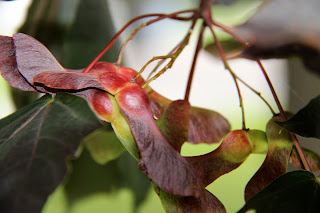Zone 5-8
Callicarpa Dichotoma
Verbenaceae
This 'Early Amethyst' Purple Beautyberry grows in the 'Rockwell Azalea Garden' at Cornell Plantations in Ithaca, New York and demands a closer look.
The tiny purple berries are inviting from a distance, but stunning when viewed up close. A hidden treasure for those who take the time to discover. These photos were taken in late November when the leaves had fallen but the berries had not yet lost their fullness.
This shrub is native to China and Japan, grows four to six feet tall and produces a heavy berry crop which, although somewhat bitter, can be used for jelly.

















































